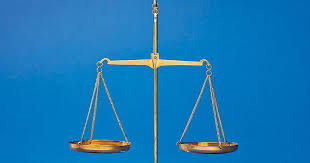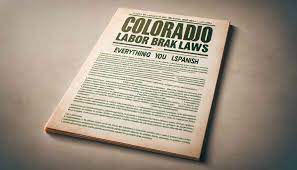This provision states that the subject is free of all debts, other than those mentioned in the transaction. This clause alerts the beneficiary about any obstacles to the asset.
These limitations are unable to guarantee a valuable claim, nor will they. A licensor is just as good as the terms they offer. Should the possessor be insolvent or lack credibility, the agreements hold no value. You will discover more about the covenant of seisin and its operation in this article.
What Is a Covenant of Seisin?
“Seisin” describes the nature of a person’s ownership of a piece of property. A grantor can acquire a portion of property through a seisin in deed or a seisin in law. Below is a more detailed description of these seisin kinds. In addition, the grantor may include covenants or assurances about the property’s title’s purity. “Covenants of seisin,” or “covenants against encumbrances,” are the terms used to describe these commitments.
In PITCHER v. LIVINGSTON, 4 Johns. 1 (N.Y. Sup. Ct. 1809), it was decided that a plaintiff has the right to recover on both covenants where a suit is brought against them and both have been breached as a result of the eviction and the defendant’s complete failure to maintain title. The recoverable amount would be the same for each, though, so the plaintiff would have to choose which one to depend on and accept minimal damages for the other. A plaintiff has the right to one satisfaction, which allows them to seek redress for any covenants at their discretion.
A plaintiff may only be awarded the consideration amount—plus interest—as well as the ejectment costs in a deed action for peaceful enjoyment and breach of the covenant of seisin. He or she is not, however, entitled to reimbursement for the improvements they have made or the rising worth of the property.
Types of Seisin
Seisin comes in two varieties that can be applied in certain circumstances. They are “seisin in deed” and “seisin in law.” Every kind of seisin has a unique strength associated with it.
Seisin in Law
In legal terms, seisin happens when the parties involved in a property transaction travel to a place where they can see the land parcel, and the transferor says he has given it to the other party. Even though a seisin is a legal way to acquire ownership of a piece of property, the procedure is regarded by the law as an incomplete conveyance.
Seisin in Deed
A seisin in deed might be thought of as the final component lacking from a seisin in law. The seisin-in-law may be converted into a seisin-in deed when the transferee physically enters the property.
In the past, a portion of the land—such as a section of the property’s turf—would occasionally be given over in place of someone physically entering the property. When one of the parties resided a considerable distance from the piece, this symbolic transfer of land was more practical. Tenants who succeeded in obtaining both a seisin in law and a seisin in deed would have the strongest possible legal title for their property.
Covenant of Seisin
The grantor’s assurance that they own a portion of the property and can thus transfer title is embodied in the covenant of seisin. Apart from the covenant of seisin, another covenant prohibits encumbrances. The property is free and clear of all liens and restrictions, except those specified in the land transfer agreement.
The covenant of seisin and the covenant against encumbrances do not guarantee the title’s marketability. The validity of these clauses depends on the grantor, which means that covenants he previously made are worthless or have no bearing at all if the grantor files for bankruptcy or loses other sources of credibility.
Warranty Deed
A warranty deed is a type of contemporary deed that acts as the grantor’s assurance that he is permitted to sell a piece of land and that there are no liens or other obstacles against the land’s title. A warranty deed and a quitclaim deed are not the same thing. The seller does not give the buyer any assurance that he is the rightful owner of the subject property while using a quitclaim deed.
It is also possible to categorize a warranty deed as “general” or “special.” A universal warranty deed provides a buyer with retroactive protection against future title flaws from the parcel’s origin.
A warranty deed may contain one of the six conventional types of covenant for title. Covenants, either current or future, can be used to categorize these agreements. Seisin, for instance, is covered by one of these covenant kinds. More information on these covenants, both current and future, is provided below.
Present Covenant
The covenant against encumbrances, the covenant of seisin, and the covenant of right to convey make up the present covenant. The buyer is reassured by the covenant of seisin that the seller is authorized to sell the property. The seller guarantees that he is the rightful owner of the property’s title and that he hasn’t engaged in a contract with anybody else to sell it by signing the covenant of right to convey. A covenant against encumbrances is the seller’s guarantee that the property is free of liens and other encumbrances other than those that are already known.
Future Covenant
The future covenant is composed of the quiet enjoyment, warranty, and additional guarantees covenants. A seller’s pledge to the buyer, his heirs, and assigns that they will be free to use the property as they choose and that they won’t be forced to leave or lose ownership at any point in the future is known as a covenant of peaceful enjoyment.
Example:
Before purchasing a home, Mr. Renold, the buyer, followed all the proper procedures, signing the covenant of seisin and agreeing to the terms set forth by the original owner. He might still find out that someone has an ownership stake, though.
Individuals are entitled to assurance of receiving their house payment even if they sign a seisin covenant. However, since the purchase is non-refundable, all of the money is used for home upgrades.
Note: A transfer without a covenant of seisin exposes the buyer of the property to danger.
Covenant of Seisin: FAQs
What does the covenant of warranty mean?
A warranty covenant stipulates that the grantor will shield and defend the grantee from third-party title disputes. A covenant of warranty could also contain a guarantee from the grantor to cover any losses the grantee sustains from other sources.
What is meant by the assurance covenant?
A contractual covenant of further assurance assures the buyer that the seller will assist in any way required to guarantee the execution of any property transfer paperwork.
What is the purpose of a deed of covenant?
A legally enforceable agreement that lays out the terms, conditions, and obligations between two parties, such as the freeholder and the leaseholder of leasehold property, is known as a deed of covenant in the context of conveyancing.
Covenant of Seisin: Conclusion
The buyer will be protected if they make future ownership claims, according to a covenant of guarantee and covenant of further assurances. It is advised that buyers conduct a title search to find any liens, obstacles, or flaws. Title insurance can be obtained from a title company to guard against future flaws. Since the grantee might not be able to execute their warranty in the event of the grantor’s death or insolvency, a warranty deed cannot be used in place of title insurance.



